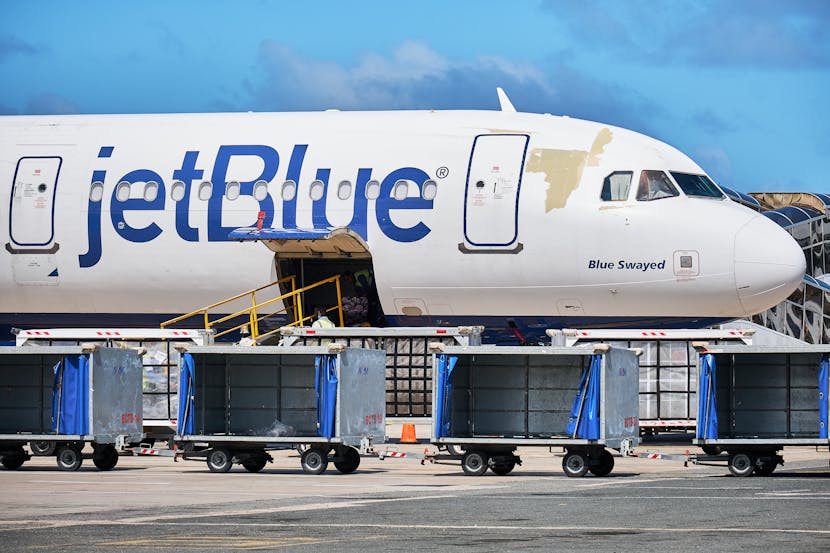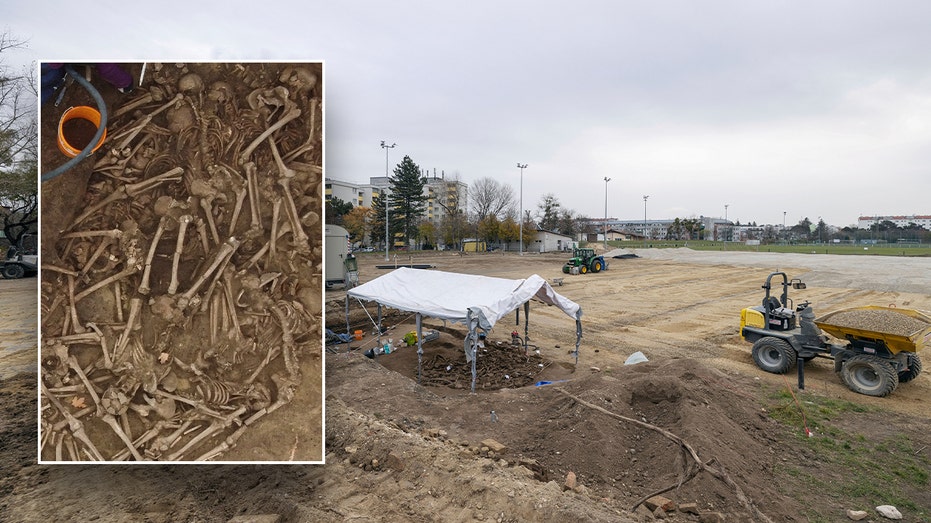- by foxnews
- 08 Apr 2025
Delta, American Airlines, Southwest, PSA, SkyWest, Frontier, Rossiya, Avianca See Cancellation Today: Here is What You Need To Know Before Your Travel Planning ?
Airline performance in the U.S. has recently come under scrutiny as major carriers and regional operators face widespread cancellations and delays, leaving passengers frustrated and travel plans disrupted. Delta Airlines recorded the highest number of cancellations, with 357 flights canceled (12%) and 561 delays (20%), while American Airlines followed with 176 cancellations (5%) and 456 delays (15%).
- by travelandtourworld
- 12 Jan 2025
- in travel

Airline performance in the U.S. has recently come under scrutiny as major carriers and regional operators face widespread cancellations and delays, leaving passengers frustrated and travel plans disrupted. Delta Airlines recorded the highest number of cancellations, with 357 flights canceled (12%) and 561 delays (20%), while American Airlines followed with 176 cancellations (5%) and 456 delays (15%).
PSA Airlines, Endeavor Air, and Republic also struggled, with significant percentages of their flights either canceled or delayed, showcasing operational inefficiencies. International carriers such as LATAM Colombia and Rossiya Airlines faced moderate cancellations but grappled with higher delay rates, at 12% and 17%, respectively.
Even low-cost carriers like Southwest Airlines, known for reliability, reported 142 delays despite maintaining one of the lowest cancellation rates. From Avianca to Batik Air, the data highlights a system-wide strain as the aviation industry struggles to balance rising demand, staff shortages, and infrastructure challenges.
Recent data on airline performance has painted a concerning picture of widespread cancellations and delays, highlighting the operational challenges facing carriers in the U.S. These issues, caused by a combination of internal inefficiencies and external factors, underscore the growing pains of the aviation industry as it seeks to adapt to increasing passenger demand. The numbers are sobering, with major carriers and regional airlines alike struggling to maintain smooth operations.
Delta Airlines emerged as the most affected airline in terms of cancellations and delays, with 357 flights canceled, representing 12% of its total operations. This figure is compounded by 561 delays, impacting 20% of its schedule. While Delta has long prided itself on operational reliability, these statistics suggest deeper issues, likely exacerbated by weather disruptions, staffing shortages, and infrastructure challenges. Delta's performance places it squarely in the spotlight as travelers increasingly voice concerns about reliability.
Also Read: Private Jet and Delta Airlines Flight Narrowly Avoid Collision at Los Angeles International Airport: You Need To Know
The challenges extend beyond the major airlines, as regional carriers and smaller airlines continue to grapple with their own share of cancellations and delays. PSA Airlines, a regional operator affiliated with American Airlines, reported 82 cancellations, representing 12% of its operations. Furthermore, 126 flights were delayed, amounting to a delay rate of 19%. These figures highlight how regional airlines, often serving as critical connectors between smaller markets and larger hubs, are not immune to the systemic issues plaguing the industry.
Avianca and Batik Air, international airlines serving the U.S., also experienced notable disruptions. Avianca reported 19 cancellations (2%) but had a significant delay rate of 16%. Batik Air saw 19 cancellations (6%) and delays impacting 21% of its flights. These figures are particularly concerning for passengers relying on these carriers for international travel, where delays can result in missed connections across continents and added stress.
Latest from Travel And Tour World: American, United, Southwest, Qantas, EasyJet, British Airways, Frontier, and Delta Airlines Skyrocketing Christmas and New Year Holiday Travel
Southwest Airlines, a major low-cost carrier, managed to maintain one of the lowest cancellation percentages at 0%. However, the airline still reported 142 delayed flights, which accounted for 4% of its schedule. While this may seem like a small fraction, the high volume of flights operated by Southwest means that even a small percentage of delays affects a significant number of passengers. As a carrier known for its efficiency and customer service, Southwest must address these disruptions to maintain its reputation in a highly competitive market.
International carriers like LATAM Colombia and Rossiya Airlines also faced operational challenges. LATAM reported 18 cancellations (8%) and 27 delayed flights (12%), reflecting moderate disruptions. Rossiya Airlines saw 21 cancellations (7%) and 48 delayed flights (17%), a higher delay rate compared to its peers. For international passengers, these disruptions can create significant logistical challenges, particularly when traveling long distances or navigating complex itineraries.
The data highlights a range of factors contributing to these operational disruptions. Weather remains a perennial issue for airlines, especially during peak travel seasons. Severe weather conditions such as storms, snow, and high winds can result in widespread cancellations and delays, as airlines prioritize safety. These weather-related disruptions often have a domino effect, with delayed flights causing crews to exceed their working hours, leading to further schedule disruptions.
Staffing shortages also continue to plague the industry. Airlines, having reduced their workforce during the COVID-19 pandemic, are now struggling to recruit and train new employees to meet rising demand. Pilots, in particular, are in short supply, with many nearing mandatory retirement age and insufficient numbers of new pilots entering the workforce. Ground staff and maintenance crews are similarly stretched thin, which affects the timely turnaround of flights.
Infrastructure issues are another significant factor. Many airports are operating at or near capacity, with outdated facilities struggling to accommodate growing passenger volumes. Inefficient baggage handling systems, limited gate availability, and congestion on taxiways all contribute to delays. For airlines like Delta and American Airlines, which operate large hubs in major cities, these infrastructure challenges are particularly pronounced.
Technology failures also occasionally disrupt operations. From flight management systems to air traffic control software, even minor glitches can result in widespread delays and cancellations. Airlines and airports alike must invest in modernizing their technology to prevent such incidents.
Latest from Travel And Tour World: Delta Airlines Unveils Exciting Non-Stop Flights to Barbados Enhanced Connectivity Begins May 2025!
For passengers, these cancellations and delays represent more than just an inconvenience. Missed connections, long waits at airports, and uncertainty about rebooking options can lead to significant stress and frustration. Business travelers face disruptions to their schedules, while leisure travelers risk losing precious vacation time. Additionally, passengers often bear the financial burden of unexpected expenses, such as hotel stays, meals, and alternative transportation.
The ripple effects of flight disruptions extend beyond passengers. Airlines face increased costs associated with accommodating stranded travelers, providing compensation, and managing rescheduling logistics. Airport operations are also impacted, as delays cause gate congestion and overcrowding in terminals. These challenges highlight the need for a more robust approach to managing disruptions.
Airlines must take proactive measures to mitigate these issues and restore passenger confidence. Investments in staffing, training, and technology are critical to ensuring smoother operations. For example, enhancing crew scheduling systems can help prevent disruptions caused by staff shortages. Similarly, improving communication with passengers during delays and cancellations can help manage expectations and reduce frustration.
Collaboration between airlines and airports is also essential. Airlines should work closely with airport authorities to address infrastructure challenges, such as expanding gate capacity and modernizing baggage handling systems. Investments in airport technology, such as advanced air traffic control systems, can help improve efficiency and reduce delays.
Transparency is another key factor. Airlines should provide passengers with clear and timely information about the status of their flights, as well as their rights in the event of cancellations or delays. This includes offering realistic estimates for rescheduling and providing prompt compensation when required by law.
Read Travel News Now: Again, Delta Airlines in Spotlight with New Flight Routes to Catania, Sicily, Naples, Rome, and Barcelona from New York, Atlanta, Boston, Minneapolis and Detroit to Boost Transatlantic Travel
Travel insurance is another valuable tool for mitigating the financial impact of disruptions. Many policies cover costs associated with delayed or canceled flights, such as hotel stays and meals. Passengers should also consider using airlines with strong track records for reliability and customer service.
The statistics on cancellations and delays highlight systemic issues within the aviation industry that require a coordinated response. Airlines, airports, and regulatory authorities must work together to address the underlying causes of disruptions and ensure a smoother travel experience for passengers. This includes investments in infrastructure, workforce development, and technology, as well as improved communication and transparency.
- by foxnews
- descember 09, 2016
Ancient settlement reveals remains of 1,800-year-old dog, baffling experts: 'Preserved quite well'
Archaeologists have recently unearthed the remarkably well-preserved remains of a dog from ancient Rome, shedding light on the widespread practice of ritual sacrifice in antiquity.
read more




